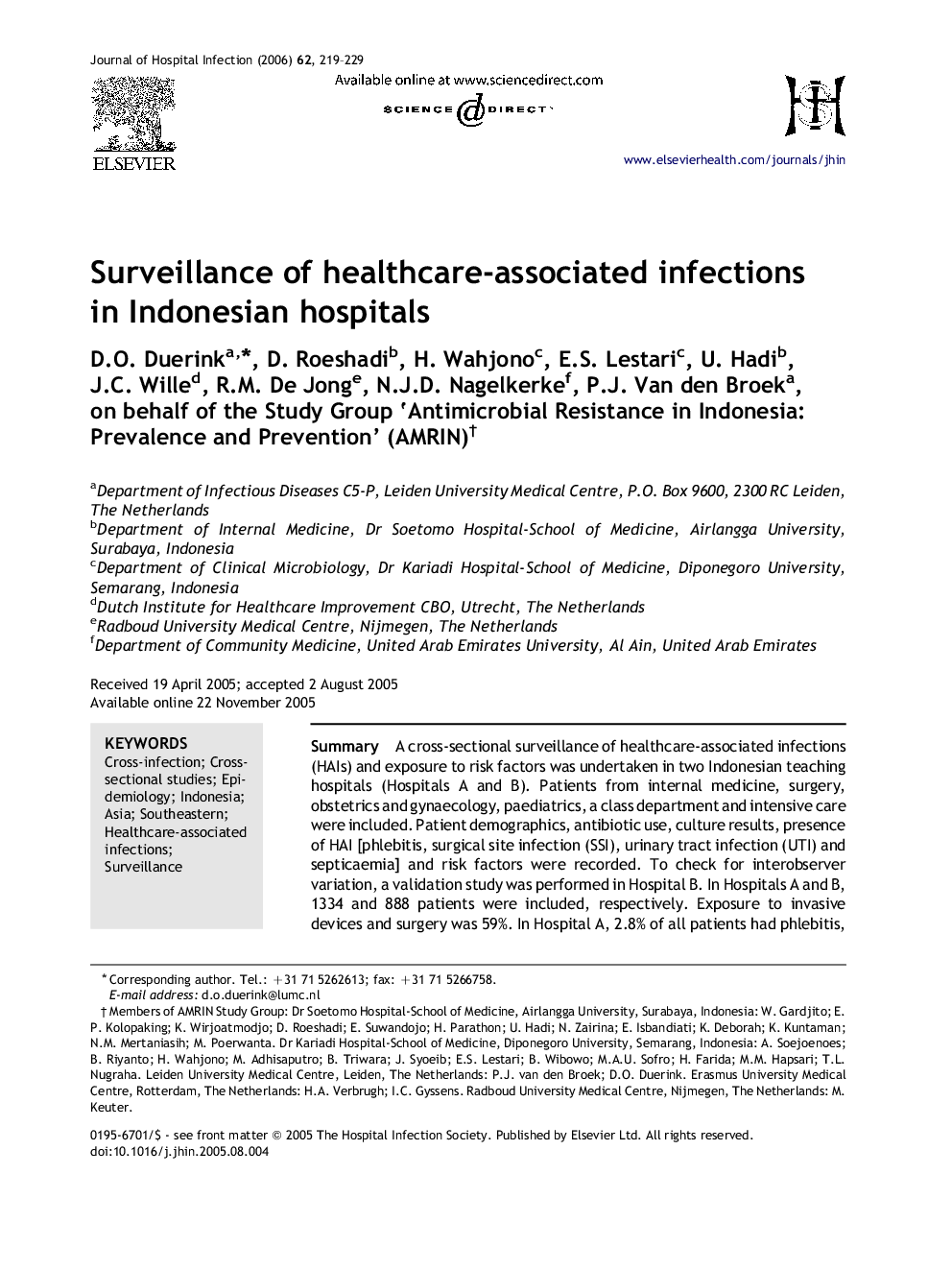| کد مقاله | کد نشریه | سال انتشار | مقاله انگلیسی | نسخه تمام متن |
|---|---|---|---|---|
| 3374302 | 1219328 | 2006 | 11 صفحه PDF | دانلود رایگان |

SummaryA cross-sectional surveillance of healthcare-associated infections (HAIs) and exposure to risk factors was undertaken in two Indonesian teaching hospitals (Hospitals A and B). Patients from internal medicine, surgery, obstetrics and gynaecology, paediatrics, a class department and intensive care were included. Patient demographics, antibiotic use, culture results, presence of HAI [phlebitis, surgical site infection (SSI), urinary tract infection (UTI) and septicaemia] and risk factors were recorded. To check for interobserver variation, a validation study was performed in Hospital B. In Hospitals A and B, 1334 and 888 patients were included, respectively. Exposure to invasive devices and surgery was 59%. In Hospital A, 2.8% of all patients had phlebitis, 1.7% had SSI, 0.9% had UTI and 0.8% had septicaemia. In Hospital B, 3.8% had phlebitis, 1.8% had SSI, 1.1% had UTI and 0.8% had septicaemia. In the validation study, the prevalence as recorded by the first team was 2.6% phlebitis, 1.8% SSI, 0.9% UTI and no septicaemia, and that recorded by the second team was 2.2% phlebitis, 2.6% SSI, 3.5% UTI and 0.9% septicaemia. This study is the first to report on HAI in Indonesia. Prevalence rates are comparable to those in other countries. The reliability of the surveillance was insufficient as a considerable difference in prevalence rates was found in the validation study. The surveillance method used is a feasible tool for hospitals in countries with limited healthcare resources to estimate their level of HAI and make improvements in infection control. Efficiency can be improved by restricting the surveillance to include only those patients with invasive procedures. This can help to detect 90% of all infections while screening only 60% of patients.
Journal: Journal of Hospital Infection - Volume 62, Issue 2, February 2006, Pages 219–229